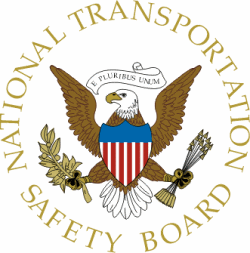Harrowing Ride Through A Thunderstorm Resulted In One Fatality
The NTSB's preliminary report for a balloon accident in Fitzgerald, GA, earlier this month paints a picture of a harrowing ride through a surprise thunderstorm which fatally injured the pilot. But that pilot was able to save the lives of the skydivers he has with him in the gondola, advising them to bail out as the storm approached. All landed safely, and praised the pilot for his heroism and sacrifice.

NTSB Identification: ERA12LA231
14 CFR Part 91: General Aviation
Accident occurred Friday, March 16, 2012 in Fitzgerald, GA
Aircraft: FIREFLY BALLOONS INC FIREFLY 8, registration: N14643
Injuries: 1 Fatal.
This is preliminary information, subject to change, and may contain errors. Any errors in this report will be corrected when the final report has been completed.
On March 17, 2012, about 1900 eastern daylight time, a Firefly 8 hot-air balloon, N14643, was lost after it climbed into a storm that formed over Fitzgerald, Georgia. A search was conducted, and on March 20, 2012, the balloon's envelope and basket were found in wooded terrain near Fitzgerald, Georgia. The pilot, who remained in the basket, was fatally injured. Visual meteorological conditions prevailed throughout the day, as the pilot/operator conducted sport parachute flights under the provisions of 14 Code of Federal Regulations Part 91.
According to one of the ground crewman for the balloon, two flights had been conducted prior to the accident flight; one in the morning and one in the afternoon. The parachutists were loaded for the second afternoon flight, the balloon lifted off, and the ground crewmen boarded the chase vehicle and drove after the balloon. Minutes after beginning the drive, the crewmen received a "severe storm warning" from the local emergency management agency by telephone.
The pilot was contacted by radio, and the crewmen, who observed the storm on their cellular telephone, advised the pilot that the storm was "getting big very quick." The pilot advised the parachutists to exit the balloon, and the ground crew watched them exit in pairs. The parachutists reached the ground uninjured. The pilot requested another storm update, and informed the ground crew that he would "attempt to get over" the storm. Shortly after, he expressed doubts that the balloon would be able to get over the storm and the ground crew watched the balloon disappear into the clouds.
The pilot provided altitude and weather updates in 1,000-foot increments to the ground crewmen as the balloon climbed to an estimated 17,000 feet. He described being battered by winds and heavy hail, and the altitude updates came "quickly" as the balloon climbed in an updraft. Around 12,000 feet, he again repeated, "I don't think I'm going to get over this thing."
At the top of the climb, the pilot advised, "I got nothing over my head" and that the balloon was descending. At an altitude of 2,000 feet, the pilot advised that he had the ground in sight.
At that point, the ground crew dialed 911, and drove the chase vehicle in the direction that they thought the balloon would land. As they drove, hard rain and hail "the size of golf balls" fell. They lost control of their vehicle, and slid into a ditch. Over the next two minutes, they estimated that 4 inches of hail accumulated on the ground.
According to Federal Aviation Administration (FAA) records, the balloon was manufactured in 2007, and issued a standard airworthiness certificate on July 19, 2007. Maintenance records for the balloon were not immediately available, and the maintenance history and total aircraft hours could not be determined.
The pilot held a commercial pilot certificate with a rating for lighter-than-air-balloon, limited to: Hot Air Balloons with Airborne Heater. His most recent FAA third class medical certificate was issued March 4, 1997.
According to an NTSB meteorologist, weather radar echo intensities of Video Integrator and Processor (VIP) level 5 and 6 were recorded in the area of the accident site at the time of the accident. Levels 5 and 6 are described as “intense” and “extreme,” respectively. Radar algorithms revealed the top of the thunderstorm between 45,000 and 50,000 feet. Hail algorithms estimated that hail reaching the surface was between .75 and 1.00 inches. According to the Sherriff who led the search for the balloon, the balloon basket still contained hailstones when it was found 3 days after the accident.
 ANN's Daily Aero-Linx (12.03.25)
ANN's Daily Aero-Linx (12.03.25) ANN's Daily Aero-Term (12.03.25): CrewMember (UAS)
ANN's Daily Aero-Term (12.03.25): CrewMember (UAS) NTSB Prelim: Maule M-7-235A
NTSB Prelim: Maule M-7-235A Airborne-Flight Training 12.04.25: Ldg Fee Danger, Av Mental Health, PC-7 MKX
Airborne-Flight Training 12.04.25: Ldg Fee Danger, Av Mental Health, PC-7 MKX Aero-News: Quote of the Day (12.04.25)
Aero-News: Quote of the Day (12.04.25)



